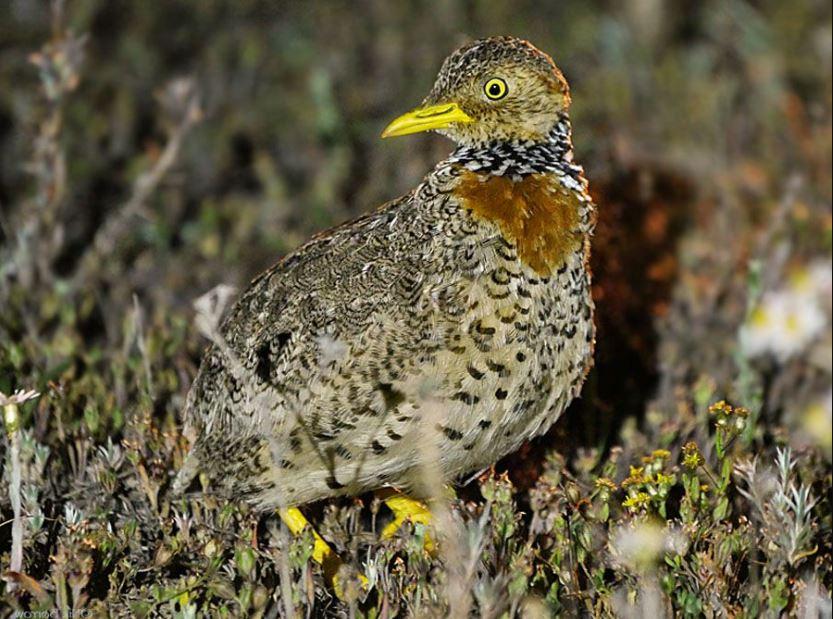In a surprising turn of events, conservationists have reported the discovery of the critically endangered plains-wanderer in an unexpected habitat, raising new hopes for the species’ survival. Previously thought to be confined to limited grasslands in Australia, this elusive bird’s presence in unfamiliar territory has sparked fresh interest among ecologists and wildlife experts. The finding, announced today on EurekAlert!, offers a rare glimpse into the behavior and adaptability of one of the world’s most threatened ground-dwelling birds, underscoring the urgent need for renewed conservation efforts.
Critically Endangered Plains-Wanderer Detected Outside Known Habitat Raising Conservation Concerns
The recent sighting of the plains-wanderer far beyond its traditional grassland habitat has surprised conservationists and researchers alike. This small, ground-dwelling bird, already listed as critically endangered, was observed in a region previously unrecorded in scientific surveys, prompting urgent calls to reassess current conservation strategies. Experts warn that such movements could be symptomatic of habitat disruption, climate shifts, or increasing pressures from human activities, all factors that threaten to unravel years of dedicated preservation efforts.
In response to the unexpected discovery, a coalition of wildlife agencies has initiated a comprehensive assessment, focusing on:
- Evaluating the quality and extent of the new habitat
- Monitoring potential threats, including predators and land-use changes
- Implementing adaptive management plans tailored for dynamic environments
| Key Factor | Known Habitat | New Location |
|---|---|---|
| Vegetation Type | Native grasslands | Sparsely wooded plains |
| Predator Presence | Moderate | High |
| Human Activity | Low impact agriculture | Expanding urban development |
This emergence outside the species’ known range underscores the critical need for flexible conservation policies that accommodate shifting ecosystems. As the plains-wanderer faces mounting challenges, the alliance’s rapid response represents a beacon of hope to safeguard this unique avian survivor.
New Sightings Provide Insight Into Species Adaptability and Migration Patterns
Recent observations of the critically endangered plains-wanderer in previously undocumented regions are reshaping our understanding of this elusive bird’s resilience and ecological flexibility. Traditionally confined to grassy plains of eastern Australia, these new sightings in colder, more fragmented habitats suggest an adaptability that scientists had not fully anticipated. The shift may be a response to environmental pressures such as habitat loss and climate change, forcing the species to explore and establish sustainable populations beyond its known range. This discovery challenges prior conservation assumptions and underscores the importance of adaptive management strategies tailored to dynamic ecosystems.
Data collected from the new sighting locations reveal notable patterns:
- Migration distance increased by up to 30% compared to historic ranges.
- Diet diversification includes seeds from native shrubs uncommon in original habitats.
- Breeding behaviors observed in slightly altered seasonal windows, possibly linked to local climate variations.
| Parameter | Historic Habitat | New Habitat |
|---|---|---|
| Average Temperature (°C) | 18 | 12 |
| Dominant Vegetation | Long grasses | Shrubland & mixed grasses |
| Recorded Nesting Period | September – November | October – December |
Experts Urge Immediate Habitat Protection and Expanded Monitoring Efforts
Conservationists are sounding the alarm following the unexpected sighting of the critically endangered plains-wanderer in a previously undocumented habitat. Specialists emphasize the urgent need to safeguard these fragile environments to prevent further decline in the species’ population. Key recommendations include:
- Immediate designation of protected zones around the new habitat areas
- Enhanced surveillance measures employing drone technology and ground surveys
- Community engagement programs to promote local stewardship
Furthermore, experts propose a multi-faceted monitoring framework designed to track population dynamics and habitat health in real time. Below is a summary of the proposed monitoring protocols tailored for the plains-wanderer’s new habitat:
| Monitoring Aspect | Methodology | Frequency |
|---|---|---|
| Population Counts | Infrared drone flyovers | Monthly |
| Habitat Quality | Soil and vegetation sampling | Quarterly |
| Threat Detection | Camera traps & community alerts | Continuous |
Closing Remarks
The unexpected sighting of the critically endangered plains-wanderer in unfamiliar territory offers a rare glimmer of hope for the species’ survival. Conservationists are now urgently assessing this discovery to better understand the bird’s shifting habitat and to develop targeted protection strategies. As researchers continue to monitor the area, this finding underscores the importance of ongoing wildlife surveys and habitat preservation efforts in the face of environmental change. The plains-wanderer’s resurgence, though fragile, serves as a poignant reminder of the resilience of nature when given a chance.
